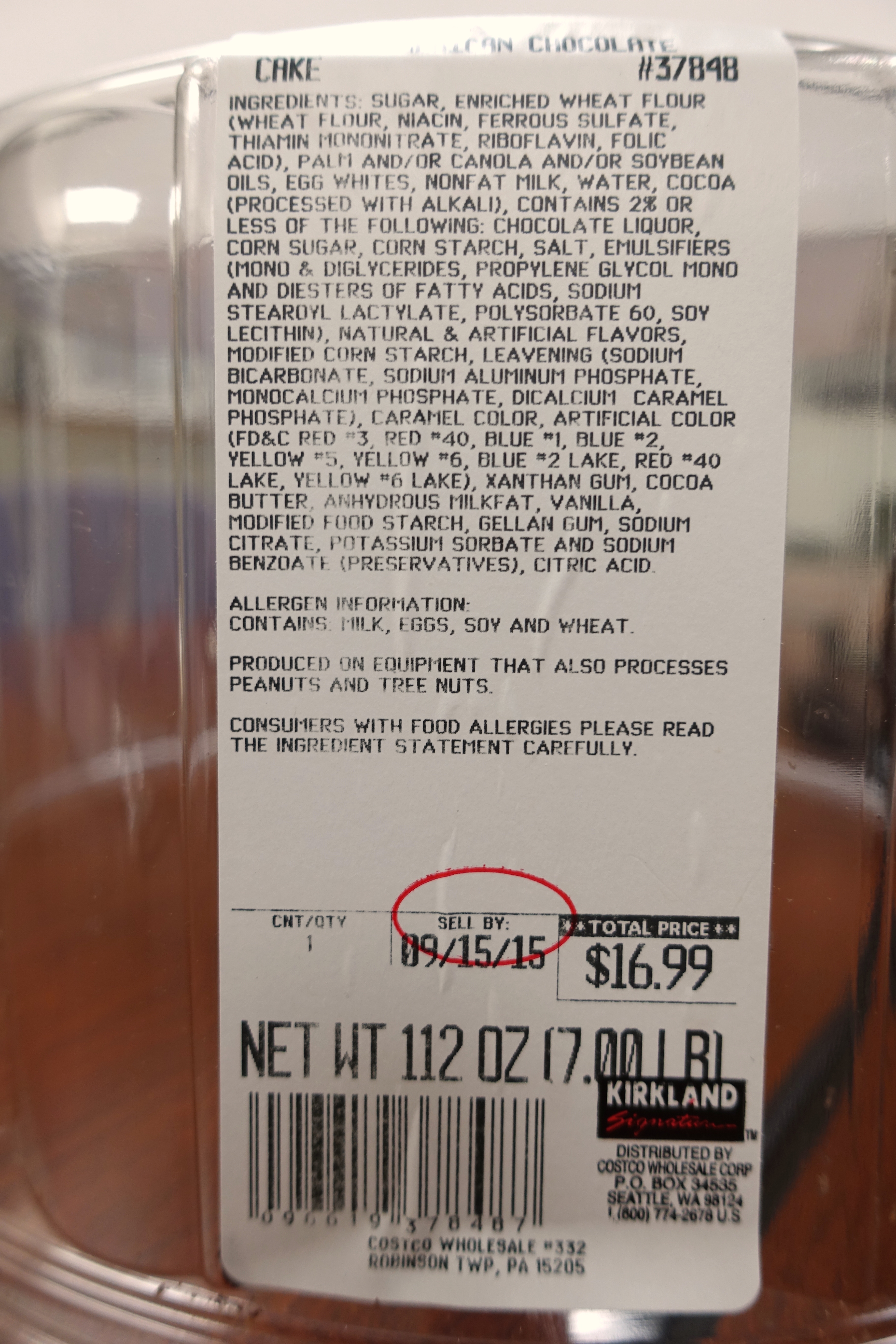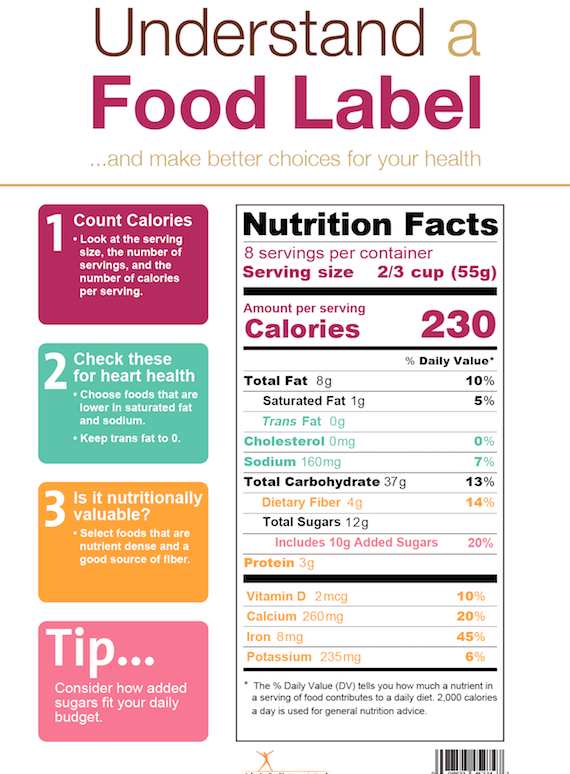42 reading labels for sugar
Reading food labels: Tips if you have diabetes - Mayo Clinic Look for foods with 3 or more grams of fiber. Put sugar-free products in their place Sugar-free doesn't mean carbohydrate-free. Sugar-free foods may play a role in your diabetes diet, but remember that it's equally important to consider carbohydrates as well. A sugar-free label means that one serving has less than 0.5 grams of sugar. Decoding Diabetes: How to Read Nutrition Labels | Accu-Chek The calories in the foods you eat are made up of fat, protein, and carbohydrates. Nutrition labels are typically made based on the assumption that you have a daily diet of 2,000 calories (kilocalories). Some labels will have a footnote that expand on this concept, providing numbers for both 2,000 and 2,500-calorie (kilocalorie) diets. Nutrients.
Sugar (American band) - Wikipedia Sugar was an American alternative rock band active in the early 1990s. Formed in 1992, they were led by the singer and guitarist Bob Mould (ex- Hüsker Dü ), alongside bassist David Barbe (ex-Mercyland) and drummer Malcolm Travis (ex- Human Sexual Response ).

Reading labels for sugar
Diabetes Food Label Reading: Quick Tips to Shop Smarter It's also good to understand that anything labeled "sugar free" can technically still have up to 0.5 grams of sugar per serving, so it's not always as straightforward as it seems. "Sugar free" and "no added sugar" does not mean carb free. Sugar labelling - Food Standards Sugar labelling. The Australia New Zealand Food Standards Code (the Code) includes requirements for food labels to include the total amount of sugars in the nutrition information panel (NIP). Total sugars includes sugar that is naturally present in the food and sugar that has been added as an ingredient. The Code contains requirements for foods ... Food Labels (for Teens) - Nemours KidsHealth Making Food Labels Work for You. The first step in making food labels work for you is to look at the entire label. If you focus on only one part — like calories or vitamins — you may not be getting the full story, like how much added sugar or fat is in the product. Serving Size. Always start with the serving size.
Reading labels for sugar. How to Read Food Labels Without Being Tricked - Healthline Other added sugars: barley malt, molasses, cane juice crystals, lactose, corn sweetener, crystalline fructose, dextran, malt powder, ethyl maltol, fructose, fruit juice concentrate, galactose,... How To Read Food and Beverage Labels - National Institute on Aging Be on the lookout for terms that indicate added sugar, such as brown sugar, corn sweetener, corn syrup, dextrose, fructose, and high-fructose corn syrup. Artificial sweeteners such as sucralose, saccharin, aspartame, and acesulfame should also be consumed in moderation. how to understand food labels - Eat For Health sugar: Dextrose, fructose, glucose, golden syrup, honey, maple syrup, sucrose, malt, maltose, lactose, brown sugar, caster sugar, maple syrup, raw sugar, sucrose. Fibre Not all labels include fibre. Choose breads and cereals with 3g or more per serve Nutrition Information Servings per package – 16 Serving size – 30g (2/3 cup) Per serve Per 100g How to Read Labels for Added Sugar | Naturally Savvy So, to get a better idea of how much added sugar there is requires a bit of label sleuthing. Here are all the many types of sugar and their various names to hunt out in an ingredient list: Anhydrous dextrose Barley malt Beet sugar Brown sugar Cane juice crystals Cane sugar Caramel Corn sweetener Corn syrup Corn syrup solids Confectioner's sugar
How to Read Nutrition Labels for Sugar - hekagoodfoods The number of grams of sugar. Keep in mind, one gram of sugar is roughly equivalent to 1/4 teaspoon of sugar. A percentage indicating how much of your recommended daily intake the item contains. While this is helpful to reference, the FDA recommends natural and added sugars account for no more than 10% of your daily caloric intake. How to read labels for added sugar - That Sugar Movement Technically, 4.2g = 1 teaspoon of sugar, but for the easy on-the-spot calculation, just remember 4g equals one teaspoon. For example, a 375ml can of Coca-Cola is about 40g of sugar. Dividing that by 4 means there are 10 teaspoons of added sugar in the one can. Reading Food Labels | ADA - American Diabetes Association Put food labels to work. The Nutrition Facts labels on foods are really the key to making the best choices. We'll cover the basics so that these labels make shopping easier for you. You've heard it all. From carb-free to low-carb, to whole and empty carbs, it's hard to know what it all means. Blood sugar highs and lows aren't always ... How to Read Food Labels When You Are Diabetic - Diabetics Weekly Study the Carbohydrate Content in Detail. This is the most important aspect of how to read food labels when you have diabetes. The total amount of carbohydrates breaks down into complex carbohydrates, sugar, and fiber. Don't hone in on zero-sugar foods, as foods like milk and fruit contain natural sugars. By the same token, make sure to watch ...
Reading Food Labels? 5 Ingredients To Avoid Giving Your Children Artificial sweeteners are found in sugar-free lollies, chewing gum, diet and sugar-free soft drinks and diet jelly. But you can also find them hidden in sauces, jams, fruit juices and even vitamin gummies. When reading food labels, artificial sweeteners are listed as numbers between 950-962. The worst offenders are aspartame (950) and saccharin ... Learning To Read Labels :: Diabetes Education Online The grams of sugar listed include both natural sugars, from fruit or milk, and added sugars. On a nutrition food label, the total carbohydrate includes the sugar. Some Nutrition Facts labels may also list sugar alcohols under total carbohydrate. Sugar alcohols may be found in products that are labeled “sugar-free” or “no sugar added.” How to Read a Food Label to Make Sure It's Keto in 3 Easy Steps 1. Look for a brand that indicates "No Sugar Added". Read the ingredient list to verify. Pederson's brand with the No Sugar-Whole30 Approved seal is my personal choice. 2. Go to the butcher. You can find him in the grocery store by the meat section or at your local butcher shop. Reading Labels: Sugar Where it Doesn't Belong - EthicalFoods.com Reading Labels: Sugar Where it Doesn't Belong by Tolly Canon You may think you know how much sugar you are eating, but if you buy ready made foods, even in so called health-food stores, you may be consuming more sugar than you ever imagined. Why wait for dessert when you can have sugar at every course?
Understanding sugar content on food labels - Diabetes Care Community Understanding sugar content on food labels is important, to ensure that you're consuming healthy amounts. Reading the ingredient lists and nutrition facts tables on packaged foods is a helpful way for you to check what kind, and how much, sugar a product has. Finding sugar content in the ingredients list
Look Closely: Reading Labels to Locate Hidden Sugar Locating Hidden Sugar | Avoiding the "-ose" Sugar can be hard to detect even when reading food labels because it appears under a variety of names. These include high-fructose corn syrup, sucrose, glucose, maltose, dextrose, lactose, corn syrup, barley malt, maple sugar, sucanat, natural cane sugar, fruit juice concentrate or dehydrated cane juice.
How To Read Food labels for Sugar | My Sugar Free Kitchen On the label check the sugars in the nutrition panel. 5g/ml or less of sugar per 100g/ml = this would count as low sugar content. It means 5% of the ingredients are sugar Between 5g/ml and 20g/ml of sugar per 100 grams = medium sugar content. With 20ml of sugar per 100 ml, this means the product is 20% sugar…not so good.
Reading labels | Diabetes UK Always look at the 'total carbohydrate' on the label when carb counting. This will make sure you are counting both the complex (starchy) and simple (sugary) carbs in your food. Both will raise your blood glucose (blood sugar) levels, and need to be matched with insulin.
Added Sugars on the New Nutrition Facts Label | FDA Let the Nutrition Facts Label Be Your Guide The new Nutrition Facts label can help you compare and choose foods that are lower in added sugars. Check the label to see if foods are LOW or HIGH in...
Label Reading the Healthy Way - Alberta Health Services Reading. To learn more about reading food labels go to . Canada.ca and search understanding food labels. Free, No, Zero, Without: The amount of the nutrient in the food is so small that it is not counted. Some examples include calorie-free, sugar-free, fat-free, or sodium-free. Low, Little, Few: Product has a very small amount of the nutrient.
How to Read a Label - Natural Sugar versus Added Sugar When you look at the label of a container of yogurt, pull the source of that sugar by looking at the Nutrition Stats and then Ingredients to determine whether that 11 grams of sugar is natural sugar from the milk, OR added high fructose corn syrup OR sugar added as a sweetener.
How to Understand and Use the Nutrition Facts Label | FDA manufacturers are encouraged, but not required, to use the "†" symbol immediately following the added sugars percent daily value on single-ingredient sugars, which would lead to a footnote...




Post a Comment for "42 reading labels for sugar"